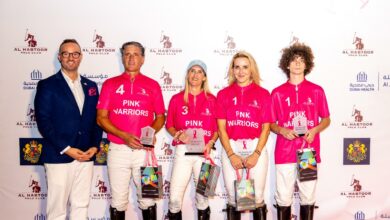by Al Badia
Horses are biomechanically designed to move in straight lines and an ill-fitting saddle can make it difficult for them to perform manoeuvres on the go. The fit of polo saddlery can significantly affect the performance of the horse in polo. It is extremely important to find a saddle fit that can accommodate both the rider and the horse to avoid complications later.
Discussed below are some of the important factors to keep in mind when fitting the saddle on a horse, followed by the key diagnostic tests that can determine an ill-fitting saddle.
Basic rules to follow when fitting a polo saddle
- One of the most important factors to consider when fitting the polo saddlery is the panel length, i.e., ensure that the panels of the saddle should not cross the last rib of the horse. Beyond the last rib, there is no structural support for the saddle, which makes it extremely difficult for the horses to use the lumbar region for stopping and accelerating in a game. Similarly, the saddle must sit behind the shoulder and wither to avoid any arthritic changes and inflammation.
- Ensure that the panels have even contact with the back of the horse and have enough clearance on the sides of the withers to accommodate shoulder rotation during movement. One of the most common problems seen in polo saddles is referred to as the “bridge”, which is when there is a gap in contact in the middle while the front and back panels pinch the back. Improper contact can lead to the horse refusing to move due to pain and sore muscles.
- Another important aspect to consider is the shape and size of the gullet, which distributes the weight of the rider evenly on the back of the horse. Polo saddles are usually not adjustable, and riders need to select a gullet that follows the same angle as the shoulder. The width of the spine will determine the width of the saddle’s gullet or channel. Too wide or too narrow a gullet can cause irreversible damage to the back of your horse.
Some other minor things to consider when fitting the polo saddle include the billet alignment, saddle straightness, and tree angle.
Symptoms that the saddle does not fit well on your horse
There are some tell-tale signs that you can keep your eye on to determine if the polo saddlery fits perfectly on your horse or not. These include:
- Behavioural problems like reluctance to move, tossing the head, not standing still, and bucking are among the first noticeable changes.
- White hairs appear under the saddle area, indicating improper wither clearance.
- Lack of muscle growth behind the shoulder and along the spine of the horse.
- Rubbed up hair and dry spots on the back when removing the saddle after riding.
- Long term damage due to improper fitting includes medical problems, like spondylosis, which might need immediate attention.
Before making the purchase, make sure to try the saddle to fit both the horse and the rider, as it should suit the riding needs of the rider and not cause pain to the horse. The rules mentioned above should help you get ready for a successful season while allowing the horse the freedom to perform its best.








